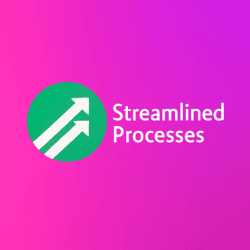For Integrated Payment Solutions, see our main page here.
What Are Integrated Payment Solutions?
Integrated Payment Solutions are systems that link payment processing directly with business platforms like point-of-sale (POS), accounting, ERP, or CRM software. These systems eliminate the need to enter financial data manually. As a result, they reduce errors, speed up transactions, and improve business cash flow.
Traditionally, businesses had to manage sales and accounting separately. However, today’s fast-paced environment demands more efficiency. By merging payment functions with software you already use, Integrated Payment Solutions bring automation to the forefront of daily operations.
Why Businesses Are Adopting Integrated Payment Solutions
The shift to automated systems reflects broader digital transformation trends across industries. Businesses are under pressure to save time, reduce costs, and improve accuracy.
Integrated Payment Solutions meet these demands with features like:
- Automatic reconciliation with accounting software
- Faster checkouts and seamless customer experiences
- Real-time financial reporting
- Secure, PCI-compliant data storage
For example, a retail store using Shopify and QuickBooks can link both through an integrated payment gateway. The sales data flows directly into the accounting software, reducing manual paperwork and financial surprises.
How Integrated Payment Solutions Work in Practice
To clarify, these systems act as a bridge between your payment terminals and business management software. Once a sale occurs, the payment info is instantly processed and recorded across relevant platforms.
Let’s say a customer pays using a credit card through a terminal connected to a cloud-based POS system. Once the transaction is confirmed:
- The payment is authorized.
- Funds are routed to the merchant account.
- The transaction is logged in the inventory system.
- The financial data is pushed to accounting for reconciliation.
This streamlined approach minimizes the possibility of human error and saves valuable time on manual entry.
Benefits of Choosing Integrated Payment Solutions
The advantages extend beyond efficiency. Businesses adopting Integrated Payment Solutions experience measurable improvements in operations and compliance.
- Fewer Mistakes: Eliminates double-entry errors and missed payments.
- Faster Payouts: Some systems offer same-day or next-day fund transfers.
- Improved Security: Centralized compliance helps reduce the risk of fraud or breach.
- Customer Insights: Access to valuable data for marketing and loyalty programs.
For instance, an e-commerce site using an integrated processor can learn which products sell fastest and when. This data supports smarter inventory decisions and targeted promotions.
Key Industries Using Integrated Systems
Integrated Payment Solutions serve many sectors—each with unique demands and advantages. Below are just a few examples:
- Retail: In-store and online sales sync automatically for a unified view.
- Healthcare: Patient billing systems connect with insurance and payment gateways.
- Hospitality: Hotels and restaurants streamline reservations, checkout, and billing.
- Professional Services: Time tracking, invoicing, and client payments all work together.
Consequently, the use of Integrated Payment Solutions continues to rise in highly regulated fields. These systems reduce compliance risks while enhancing transparency and reporting.
Choosing the Right Integrated Payment Provider
Above all, finding the right solution means aligning your business goals with the technology. Not every payment system offers full integration. Therefore, research is key.
When evaluating a provider, look for:
- Scalability to grow with your business
- Transparent fee structure
- Support for your current POS, CRM, or ERP
- High uptime rate and reliability
Additionally, confirm if the provider keeps up with industry security standards and ongoing software updates. Compatibility with existing tools boosts adoption with minimal disruption.
Integrated vs. Traditional Payment Processing
Unlike traditional systems, which operate in silos, Integrated Payment Solutions unify operations into one system. While traditional processing works for smaller or low-volume businesses, it creates friction at scale.
Here’s a quick comparison:
| Feature | Traditional Payment | Integrated Payment |
|---|---|---|
| Manual Data Entry | Yes | No |
| Real-Time Reporting | Limited | Yes |
| Error Reduction | Low | High |
| Customer Experience | Generic | Personalized |
Most importantly, Integrated Payment Solutions offer depth and flexibility that manual systems cannot compete with. As your business scales up, so do the benefits of going with a fully integrated option.
Current Trends in Integrated Payments
With digital wallets, e-commerce, and mobile technology expanding, Integrated Payment Solutions continue to evolve. There’s a shift toward API-first platforms and embedded payments.
For example, custom apps now include built-in payment features to speed up user engagement. Likewise, AI and machine learning help predict fraudulent activity and suggest optimized payment flows.
Further, tools like buy-now-pay-later (BNPL) and cryptocurrency acceptance are being fitted into integrated options. These trends show promise, especially for capturing younger and global audiences.
FAQs About Integrated Payment Solutions
Are Integrated Payment Solutions more secure than stand-alone processors?
Yes. Most solutions include data encryption, PCI compliance, and fraud detection tools. Because they reduce manual touchpoints, they also lower chances of data leaks.
Do I need technical knowledge to use integrated systems?
No. Many providers offer plug-and-play integrations. Some may need one-time setup help, but daily use is easy for most staff.
Can I still accept offline payments?
Yes. Some systems allow payments to be taken offline and sync once you’re back online. This is ideal for mobile vendors or pop-up shops.
What if my business scales quickly?
That’s one of the main benefits. Integrated Payment Solutions often come with modular plans or support for growth as your needs change.
Final Thoughts on Integrated Payment Solutions
In short, Integrated Payment Solutions bring your financial systems together, saving time and reducing chaos. While the initial setup may seem like a challenge, the long-term benefits are worth it.
This article was created with the assistance of AI tools and reviewed by our team at Streamlined Processes LLC to ensure accuracy and relevance.
Follow us on Facebook here.

